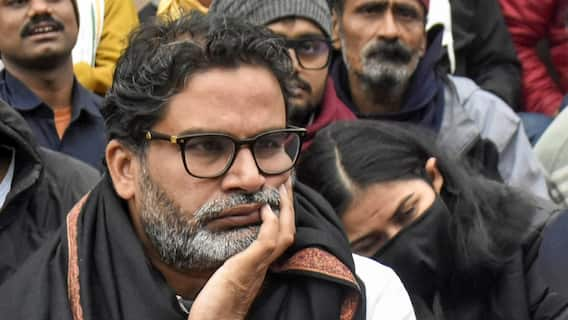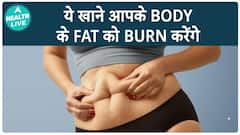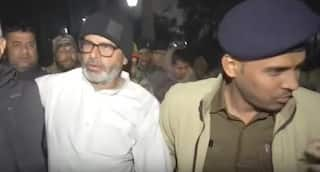World Ethnic Day 2023: Unwinding The Rich Cultural Heritage And Ethnicity Of Indian Classical Dance
ABP Live spoke to Indian Classical Dancers who unfurled the evolution of Indian classical dance, discussed about its ethnicity and also shared the healing power of dance.

New Delhi: In India, dance became a classical art form and a conduit between the outside world and internal teachings. There is evidence from ancient India that the kings, queens, and princesses enjoyed dancing. The dancers in the old Indian kingdom were accompanied by the monarchs on flute or veena. Thus, Bhakti, or devotion, Nyaya, or justice, Satya, or truth, Ghanate, or dignity, and Soundarya, or beauty, served as the foundation for the development of dance in India. Indian dance history is devoted to classical dance styles whose history spans more than 2000 years. It has been noted that the second and third centuries are when the classical style of dancing first emerged. There are seven different types of Indian classical dance, including Bharatnatyam, Kathak, Kathakali, Odissi Kuchipudi, Mohiniattam and Manipuri.
In this regard, ABP Live spoke to Indian Classical Dancers who unfurled the evolution of Indian classical dance, discussed about its ethnicity and also shared the healing power of dance.
Evolution Of Indian Classical Dance With Time:
The practice of dance in general is as old as humanity itself. Every civilization and culture in the world has gone through a stage of development where physical motions were used to represent human emotions. Even before language evolved, people communicated nonverbally by using facial expressions, hand gestures, and limb movements to convey their feelings. These movements, ideas, emotions, themes, and even abstract concepts became dance when they started to synchronise it with song.
Kathak Dancer Dipali Chakraborty shared that Indian Classical Dance has a specific and significant background associated with the very roots of our cultural past and today, it is a powerful medium for recapitulating and preserving our cultural heritage.
She said, "Classical dance of India recalls the history of over 5,000 years that speaks of efficacy and creativity in the arts, philosophy, and literature despite India’s vastness, diverse natural resources, frequent invasions, and external influences. Indian dance has retained its identity in the cultural realm of Indian psyche."
In addition to her, Bharatanatyam dancer (Padmashri) Geeta Chandran spoke about the development of Indian classical dance, laying an emphasis on Bharatanatyam.
"Speaking of Bharatanatyam, in the early decades of the 20th century it transformed from a closely held 'ethnic' art practiced by a single social community to become a national art form that embraced practitioners beyond ethnicity and even gender lines. This explosion of an art form and its globalization is one of the best soft-power stories that emanate from India.", she said.
"In fact, with passing time, it has evolved not just as performing art, but also as an academic discipline that is taught in universities in India as well as abroad. However, there has been a huge impact of westernization on classical music, dance, and other art forms.", Dipali further added.
Impact of westernisation on Indian Classical Dance
In this regard, Geeta Chandran said, "There is a touch of superiority in that question that places our culture above the so called 'western' cultures. That does not work for me. I am respectful of cultures from across the world; each culture has evolved from unique human experiences interacting with diverse socio-politico-economic and environmental parameters."
"But, yes, some aspects of the western cultural experience have undoubtedly impacted our own classical forms. The use of tech, which we first encountered there, is today, an accepted norm in our dance presentations. The spectacle that we aspire today is also triggered by the large stage spectacles we have seen in both the Russian and the American performing arts. But our dances have retained their own uniqueness despite this.", she further added.
Geeta Chandran then spoke about how Indian classical dance gradually becomes a way of life saying, "Our classical dances are primarily narrative in their delineation; the use of the entire body, particularly the face to express diverse and complex narratives and emotions is an extremely evolved and sophisticated craft. Also, in India, since dance is related to rituals, festivals and the rolling seasons, it often transcends from being a mere proscenium art."
Speaking about the impact of westernization on Indian classical dance Dipali also said, "There was a phase, when Western art forms had become more popular compared to the Indian art forms. Due to this, people started learning them which led to the Indian art forms being neglected. Many people, especially youngsters, did not even know about Indian classical dance and music. But again, over the course of time, revival of these art forms began. Not only Indians but people from all over the world started taking interest in learning these art forms."
Talking about the present scenario, she said that today there are many artists around the world who keep promoting Indian art forms and youngsters are also learning both western and Indian arts.
The Cultural Ethnicity Of Indian Dance Forms:
In this regard Dipali said, "Indian classical dancing started around 200 BCE in India, as a joyful and celebratory activity, often in devotion to Hindu deities. Many of the performances were choreographed to retell stories of the gods and other historical accounts of that time. It is an umbrella term for different regionally-specific dance traditions, rooted in predominantly Hindu musical theatre performance, the theory and practice of which can be traced to the Sanskrit text Natya Shastra. All styles of Indian classical dance are vibrant, expressive and spiritual and these dance performances usually took place at temple festivals, universities, various cultural events, and more."
Healing Power Of Indian Classical Dance:
Dance therapy is a relatively new and developing field of study in both psychology and dance pedagogy. Numerous studies have demonstrated the therapeutic benefits of dance and movement in the physical, mental, and psychic domains.
In this regard, Dipali said, "The first effect of classical dance on the healing process is on the mind and is related to mood and satisfaction, while the long term effects are related to discipline, memory and a positive lifestyle. Classical dance is an excellent form of exercise because it not only burns calories and builds muscles, but it also contributes to an overall sense of happiness."
Trending News
Top Headlines








































